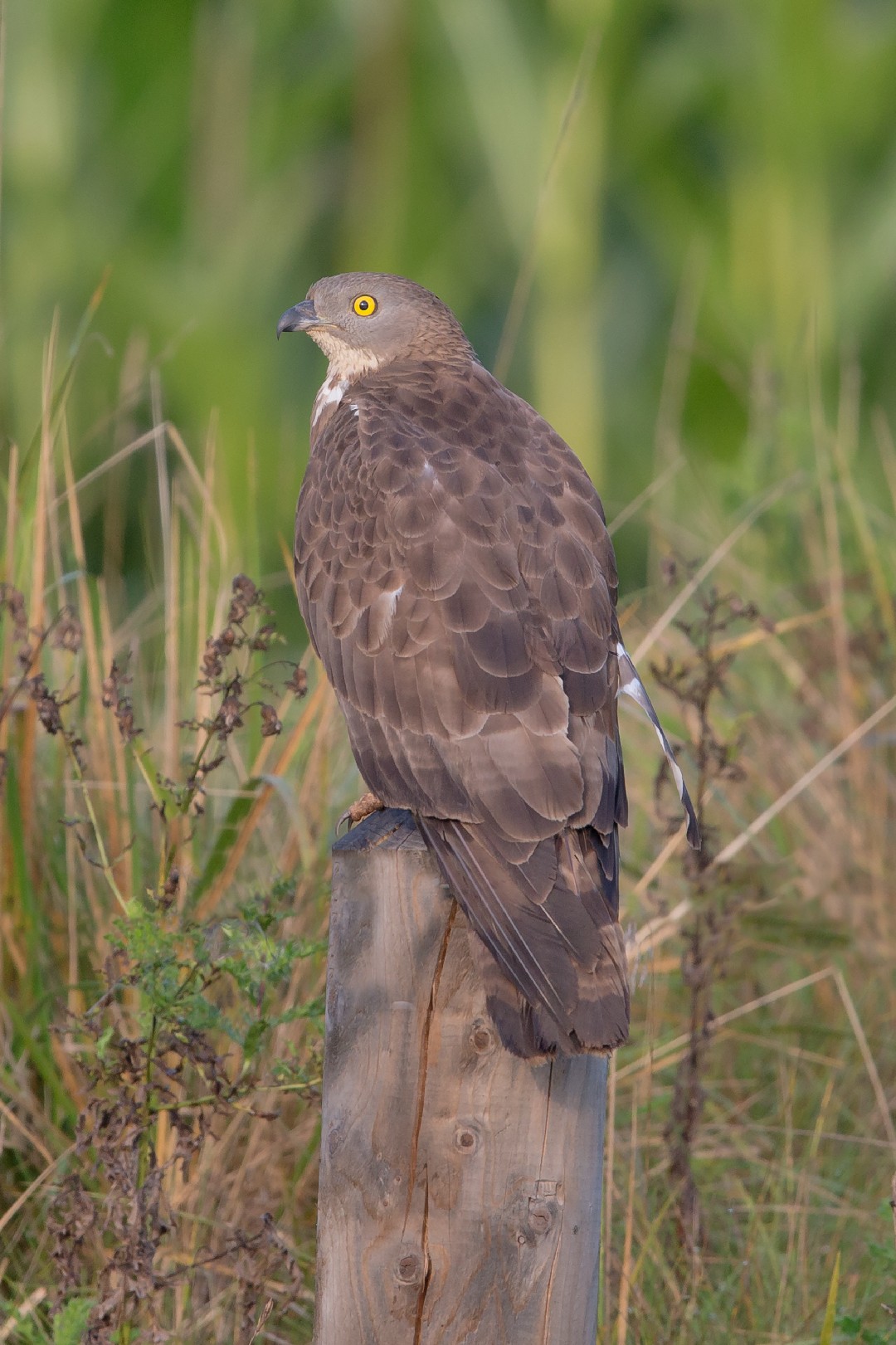European Honey-buzzard
A species of Typical Honey-buzzards Scientific name : Pernis apivorus Genus : Typical Honey-buzzards
European Honey-buzzard, A species of Typical Honey-buzzards
Botanical name: Pernis apivorus
Genus: Typical Honey-buzzards
Content
Description People often ask General Info
 Photo By Andreas Trepte , used under CC-BY-SA-2.5 /Cropped and compressed from original
Photo By Andreas Trepte , used under CC-BY-SA-2.5 /Cropped and compressed from original Description
The 52–60-centimetre (20–24 in)-long honey buzzard is larger and longer winged, with a 135–150-centimetre (53–59 in) wingspan, when compared to the smaller common buzzard (Buteo buteo). It appears longer necked with a small head, and soars on flat wings. It has a longer tail, which has fewer bars than the Buteo buzzard, usually with two narrow dark bars and a broad dark subterminal bar. The sexes can be distinguished on plumage, which is unusual for a large bird of prey. The male has a blue-grey head, while the female's head is brown. The female is slightly larger and darker than the male. The soaring jizz is quite diagnostic; the wings are held straight with the wing tips horizontal or sometimes slightly pointed down. The head protrudes forwards with a slight kink downwards and sometimes a very angular chest can be seen, similar to a sparrowhawk, although this may not be diagnostic. The angular chest is most pronounced when seen in direct flight with tail narrowed. The call is a clear peee-lu. 
Size
60 cm
Colors
Brown
Black
Gray
White
Life Expectancy
29 years
Nest Placement
Tree
Feeding Habits
European Honey-buzzard predominantly feeds on wasp and hornet larvae, foraging forest floors and employing their long toes and claws for excavation. Adaptations include scale-like head feathers for sting defense and potential chemical deterrents in their feathers. Occasional prey includes small mammals, reptiles, and birds.
Habitat
European Honey-buzzard favors deciduous forests and woods in temperate and boreal zones, sometimes utilizing mixed or coniferous forests. Their preference for relatively undisturbed woodlands extends to a broad geographical area within the western Palearctic for breeding and to tropical Africa for wintering. Habitats surrounding woodlands, such as heaths and cultivated lands, are also utilized. Typically residing at low to medium altitudes, european Honey-buzzard can be found up to nearly 2000 meters in mountainous regions. In Africa, european Honey-buzzard adapts to secondary forests, wooded savannahs, and densely wooded areas.
Dite type
Insectivorous
People often ask
General Info
Feeding Habits
Bird food type
Behavior
It is sometimes seen soaring in thermals. When flying in wooded vegetation, honey buzzards usually fly quite low and perch in midcanopy, holding the body relatively horizontal with its tail drooping. The bird also hops from branch to branch, each time flapping its wings once, and so emitting a loud clap. The bird often appears restless with much ruffling of the wings and shifting around on its perch. The honey buzzard often inspects possible locations of food from its perch, cocking its head this way and that to get a good look at possible food locations. This behaviour is reminiscent of an inquisitive parrot. 
Distribution Area
The European honey buzzard is a summer migrant to a relatively small area in the western Palearctic from most of Europe to as far east as southwestern Siberia. The eastern area boundary is not yet known exactly, it is thought to be in the Tomsk–Novosibirsk–Barnaul area. It is seen in a wide range of habitats, but generally prefers woodland and exotic plantations. It migrates to tropical Africa for European winters. 
Species Status
Not globally threatened.
Scientific Classification
Phylum
Chordates Class
Birds Family
Hawks Genus
Typical Honey-buzzards Species
European Honey-buzzard